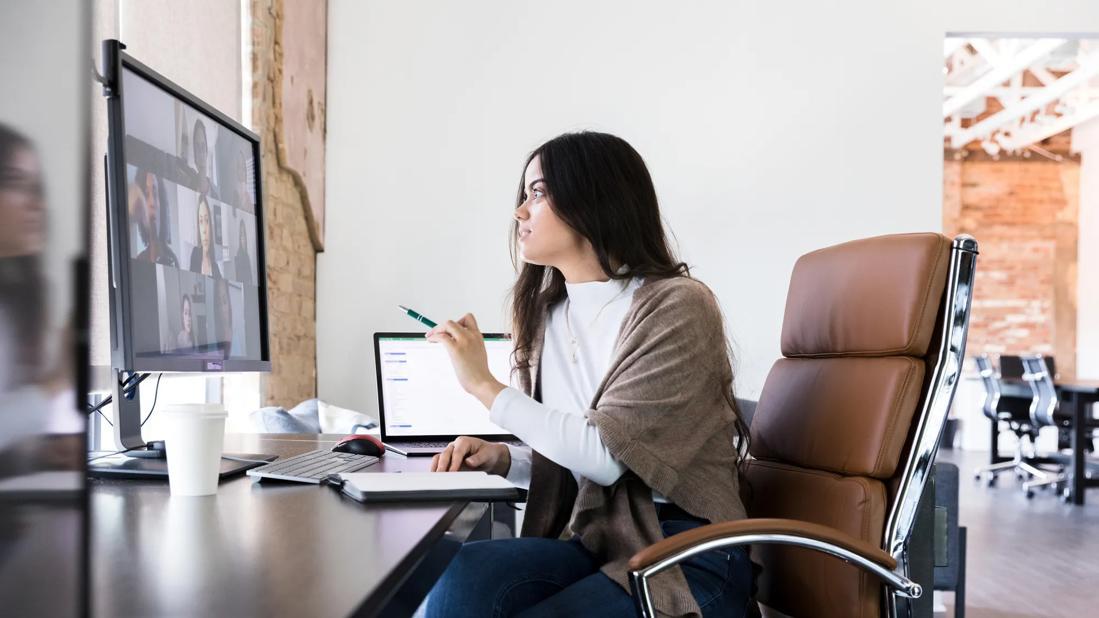What’s ‘Office Chair Butt’? And What Can You Do About It?
Sitting for long hours, like at your desk job, can make your butt sag — among other effects

You can hardly scroll through social media these days without someone popping up on your feed talking about their #OfficeChairButt.
What’s behind the woes? And what can you do to avoid, or remedy, office chair butt?
What is office chair butt?
“Office chair butt” is the name that’s popped up online to describe how too much sitting affects the look of your behind. It’s a popular term that medical pros refer to as atrophy of your gluteal muscle group.
“A lack of conditioning in your gluteus maximus and surrounding tissue leads to weakness, making it build up fat tissue and appear flatter or saggy,” explains occupational therapist Michael Milicia, OT.
In other words, the muscle mass that creates a more rounded behind is a use-it-or-lose-it kind of thing. When it doesn’t get the work it needs, fat settles in on top of the muscle. Because fat tissue is softer and more pliable than muscle, it doesn’t hold its shape as well. And, voila, office chair butt.
What does office chair butt look like?
People describe office chair butt as looking like your butt is:
- Droopy
- Saggy
- Floppy
- Flabby
- Flat
- Soft
- Squishy
It’s no different from the way any muscle in your body can lose its shape when it’s not used regularly. Like upper arms that fall victim to the effects of gravity. Or so-called “turkey neck.”
Why does office chair butt happen?
The term “office chair butt” makes it sound like your chair is to blame for buns that aren’t quite steel. But that’s not the case.
It’s not your chair that’s the trouble. It’s just how much you’re using it.
“Sitting too long without breaks isn’t particularly good for anything,” Milicia points out. “The key is to activate your glutes to offset that sitting as much as possible.”
So, rather than rushing to shell out for a new chair, consider how long you spend sitting. And how you can encourage more movement in your day.
How to avoid office chair butt
The key to avoiding office chair butt is, quite simply, to get your rear in gear — create more opportunities to exercise your glutes.
More movement will help keep your butt looking more toned. What’s more, it can help counteract other effects of prolonged sitting, namely gluteal amnesia (or the memorably named dead butt syndrome). That leads to things like tightness in your hips, weakness in your lower back, rounding in your shoulders and more.
And over time, a lack of exercise can lead to serious troubles, like heart disease and even certain kinds of cancer.
Milicia shares his recommendations for counteracting office chair butt.
Find reasons to move
Some jobs require you to be more or less tied to your desk. We get it. But there may be little ways to break up your sitting. Try:
- Standing while taking a phone call
- Placing your filing cabinet or other equipment you use during the day a few feet away from your desk
- Walking to a colleague’s office for a face-to-face talk, rather than sending an email
- Inviting co-workers for a walking meeting
- Taking the stairs rather than the elevator
- Choosing a restroom that’s a little farther away
- Switching to a sit-stand desk
- Trying a walking pad under your desk
A good rule of thumb? “Try to get up and move every 30 to 90 minutes, as your job allows,” Milicia recommends.
Seated exercises
There are ways to activate your lower half even when you’re in your chair. And your coworkers will be none the wiser. Try:
- Butt clenches
- Marching in place
- Heel lifts
- Toe lifts
- Ankle circles
- Squeezing a ball (or your fists or other prop) between your legs
- Trying to hold your knees apart while pushing them together when your hands
Dedicated exercises
When your workflow allows — or outside of your workday — spending some time dedicated to exercising your glutes can go a long way toward warding off office chair butt and other risks that come with excessive sitting. Some of the best exercises to keep your butt in shape:
- Squats and squat variations
- Lunges, including forward, backward and side to side.
- Bridges
Bottom line
Sitting for hours on end — whether at your desk, in the car or on the couch — isn’t your butt’s preferred state. And its effects can go far beyond how bouncy your booty is.
Anything that helps you move more and sit less will help keep you looking and feeling your best.